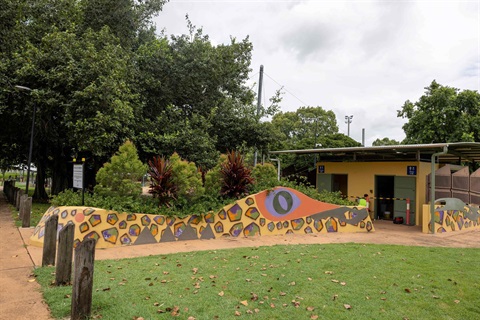In a nation with a growing percentage of ‘party misfits,’ sociologist Delia Baldassarri studies how the identities that make us feel different could bring us together
“?” a New York Times headline asked this summer. “” proclaimed an NPR story in 2020. “” topped a Los Angeles Times article in 2016.
Taking cues from news organizations during the past few presidential election cycles, one might easily conclude the US is irreconcilably divided over politics-in fact, earlier this month, the Wall Street Journal ran a outlining Americans’ partisan division in purchasing products from breakfast cereals to athletic shoes. It’s become a truism that we live isolated within partisan social “bubbles,” seeking out conversation and companionship only among those who vote the way we do.
However, this perception overlooks many points of broad national agreement. For instance, an Associated Press/NORC conducted this spring found that “most Americans share many core beliefs about what it means to be an American.” More specifically, it showed that about 90 percent of US adults said “the right to vote, the right to equal protection under the law, and the right to privacy are extremely important or very important to the United States’ identity as a nation.”
This disconnect doesn’t surprise NYU sociologist , who has studied for years and has written about its “puzzling paradoxes,” highlighting the tendency of pundits to exaggerate the phenomenon and survey data showing that most individuals experience a variety of political attitudes within their networks.
“When we ask them about their close ties-people they talk to about important matters-more than one-third of respondents report that of the few people they talk to on a regular basis, at least one of them is a supporter of the opposite party,” Beldassarri says.
Among casual acquaintances, most respondents report a proportion of contacts who don’t share their party affiliation ranging between 30 and 50 percent.

NYU sociologist Delia Baldasssarri
“So instead of living in echo chambers as described by the media,” she adds, “the average American lives in a heterogeneous environment and does have to deal with people of opposite political views.”
Recently, Baldassarri has turned her attention to ““-the large number of Americans who don’t feel fully represented by either major political party.
“The misfits I document could be people who identify as moderates or people who identify as independents-independents are almost 50% of the population-or people who are cross-pressured,” meaning that they hold some views or identities typical of one party and some that are associated with the other, Baldassarri explains. “These could be people who are economically progressive, but more conservative on moral issues-or the other way around. So what I do is document the everyday struggles of people who don’t easily map into the stereotypical representation of a Democrat or Republican.”
In fact, the political beliefs that are typical of Republicans and Democrats are held in a “consistent and coherent” way by only a limited part of the population, says Baldassarri, who has also studied outside the US.
Ahead of this fall’s presidential election, NYU News spoke with Baldassarri about the forces that work to push us apart, how our multiple identities can help us find common ground, and what political parties can do to better reflect the diverse views of voters.
You’ve written that “democracy is in peril when people wear politics on their sleeves.” What do you mean by that? Or can you point to some examples of it?
One of the main differences between democracies and authoritarian regimes is that in authoritarian regimes you tend to have politics permeating and controlling every aspect of social life. In these regimes, citizens need to have contacts with the party or the ruling leadership in order to find jobs or housing-things we usually don’t think come directly from politics.
In my view, the beauty of democracies is that, at least in theory, many domains of life are not permeated by politics. So I am a bit worried when I see signs of politics becoming overwhelmingly important in many domains of life, like dating, consumption habits, or job applications. In that sense, I think that wearing politics on our sleeves might be a negative sign.
If we judge people as possible acquaintances or friends or dating partners on the basis of their politics instead of judging them on other criteria that usually drive interpersonal relationships, or if we judge collaborators or co-workers on the basis of their politics instead of their life skills, we might be prevented from maintaining a social life that is fully integrated.
It makes it harder to mingle with people from different walks of life and see the good outside people from our own political party. I’m not claiming that civic participation or voting is not important. What I’m saying is that partisanship should not inform behavior outside the political domain, especially when we talk about judging others in our everyday lives.
How is sorting by politics different from sorting by religion, geography, or the other characteristics you cited?
Every individual has multiple identities-for example, gender, race, religion, and lifestyles. Many people don’t sort stereotypically into either party based on these categories. For example, many immigrants are more religious than non-immigrants, but they are also less likely to be wealthy and tend to rely on the welfare state more. If we think about their social demographics, many won’t be easily matched with one party or the other.
But these cross pressures are what keep us together. You might have on both political sides people who are, say, rich or people who are religious, because that identity might not be driving their voting decisions. However, if it’s political-party identification that divides us to start with, then we start to see every other social demographic as irrelevant and it’s inevitable that we end up divided.
If, as your work has shown, most people do not sort easily into Republican or Democratic camps, why, then, is there so much reporting in the media on partisan division? Stereotypical accounts of a polarized society even show up in works of fiction, such as the film .
Imagine you’re a journalist reporting, let’s say, on education policies. Would you be more successful covering the PTA meeting in which parents are fighting over book bans or the hundreds of other PTA meetings in which parents are just trying to fix the basic needs of public education? You can apply the same logic to many other domains in which in the United States. It’s much more profitable. that talk about division than on articles with reports with no division in the community.
There is an incentive for journalists to attract people’s attention to push an agenda where they depict the country as constantly divided. To give you an example, which I find very telling, the New York Times a few years ago had this experiment in which it took pictures of people’s : 50 Biden voters and 50 Trump voters. And then they asked people to classify others’ politics based on the refrigerators’ contents. The outcome was that people are not capable of telling others’ politics from what’s in their refrigerator, which the Times acknowledged in its report on the scores. But the editors also included lists of “top details from Biden refrigerators” and “top details from Trump refrigerators.” So they continued to highlight the things that divide us even when there was no clear evidence for division on this basis.
How did we get to the point of the media constantly reproducing the image of a country that is deeply divided when there is plenty of evidence of a country that might not be as divided? One of the structural reasons is the , which actually made it less relevant for any news source to speak to the people who are in the middle and instead made it extremely important, not only for Fox News, but also the others, such as MSNBC and CNN, to and to cultivate, in the case of Fox, a partisan audience.

Kirsten Dunst in “Civil War”. Credit: Courtesy of A24.
The other element that is extremely important from a structural point of view is the nationalization of politics. Reporting about politics, and as a consequence of the political debate, is always at the national level, even when we are talking about elections at the local level or gubernatorial level. The media don’t report much about the specific local needs of the constituents and instead report debates that are exclusively national.
This is connected to the fact that and have become more oriented toward cultivating an audience that is tuned into national politics rather than local issues.
These two dynamics really created an incentive for the media to constantly produce an image of the opposite party that is stereotypically extreme.
are concerned that animosity between the parties could lead to violence after this year’s presidential election. Is there anything in your current research that points toward a more hopeful vision for the future?
First, the fact is that we cannot drop social relationships just because of politics. Most people cannot change where they live to move to more politically friendly locations. They cannot leave their jobs just because they are in an environment where people don’t share their politics. So in some ways there are structural constraints that keep us in environments where we are constantly faced with individuals who don’t believe the same things we do.
This is positive because knowing out-partisans keeps our minds open and maintains a certain level of tolerance. It makes people realize that not every Republican or Democrat is an extreme person-and that most Republicans and Democrats are actually pretty moderate in their views and most of them don’t care about politics much. So even occasional encounters with people who are not like us might go a long way to reduce our stereotypes.
Second, even if people are negatively inclined toward members of the opposite party, politics is unlikely to come up immediately. So when we meet new people, for instance in leisure activities-at a soccer game or at a concert-we do not necessarily reveal our political views. New relationships might therefore form, and only later on, we might discover that we are on opposite sides on certain political issues. But by having created a bond based on other commonalities, we can overcome those differences and still hang out together.
Finally, the number of identities that are becoming relevant for individuals today is increasing. And that means that not everybody easily fits into one group or another. That’s a good thing because it might actually force political parties to touch base with reality and revisit some of their very extreme positions on some issues.
In short, I believe that, while the political elite is certainly divided, regular people do not sort easily into Republican or Democratic camps. Whether because of their sociodemographic profiles, heterogeneous social networks, or cross-cutting political preferences, few individuals fit the description of a stereotypical Democrat or Republican.
You’ve shown that citizens are not necessarily as divided as we’ve been led to believe. Is there anything that you hope that will change based on your findings?
US political polarization is a top-down process, and the combination of political and economic incentives that led us to a situation in which extreme views dominate and compromise is rarely possible won’t change simply because we realized that the gap between parties and citizens is larger than we thought.
However, there is one thing we should consider, as scholars and citizens: by constantly focusing on the subgroup of the population that is hyper-partisan, we have contributed to this misrepresentation. I believe we should stop feeding this simplistic “Us versus Them” narrative and instead document the tensions that citizens experience in their everyday life. We should highlight the gap between voters and parties and turn our attention to the real causes of political division, including the power of interest groups, media fragmentation, rising inequality, and the nationalization of politics.







